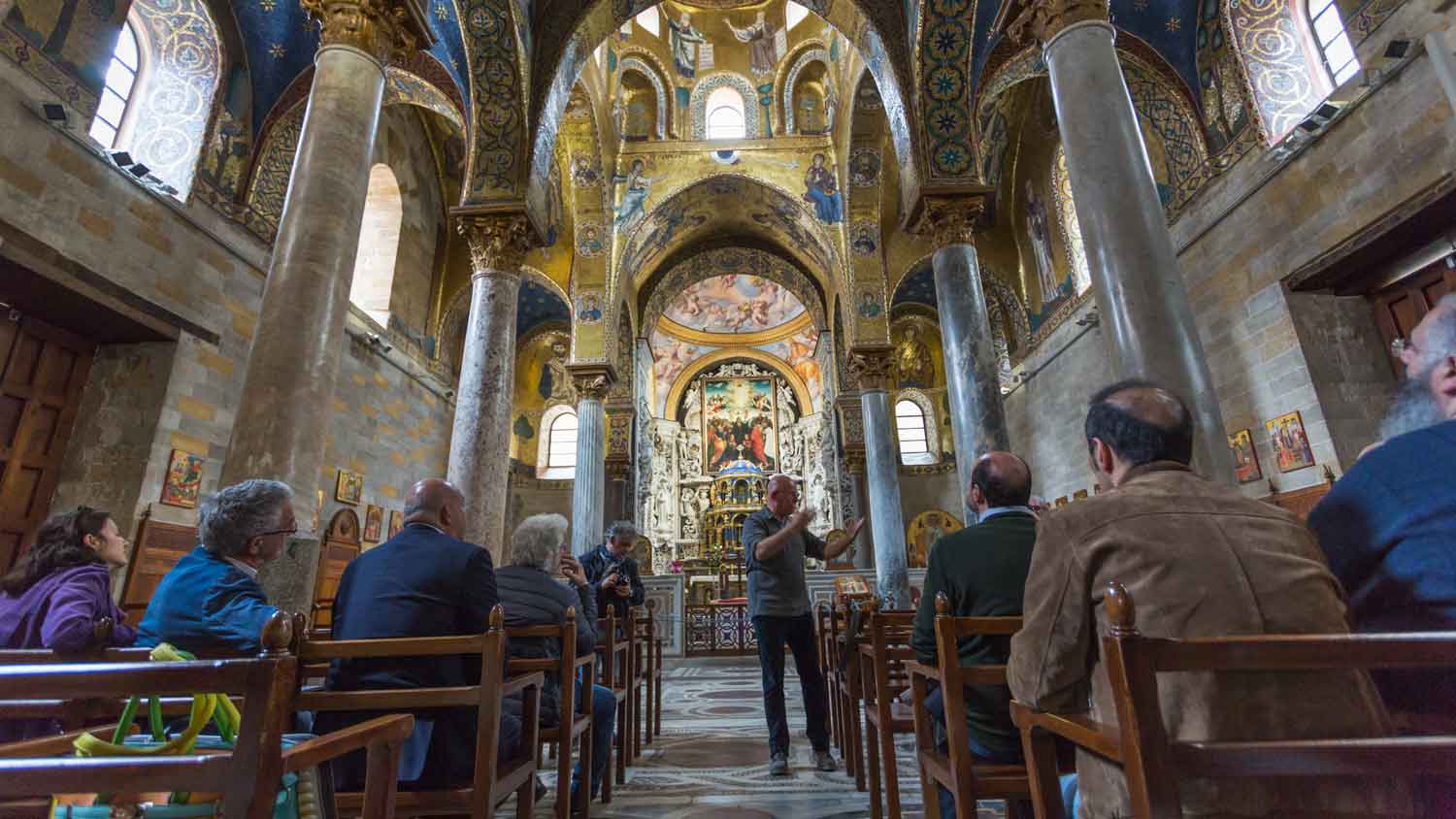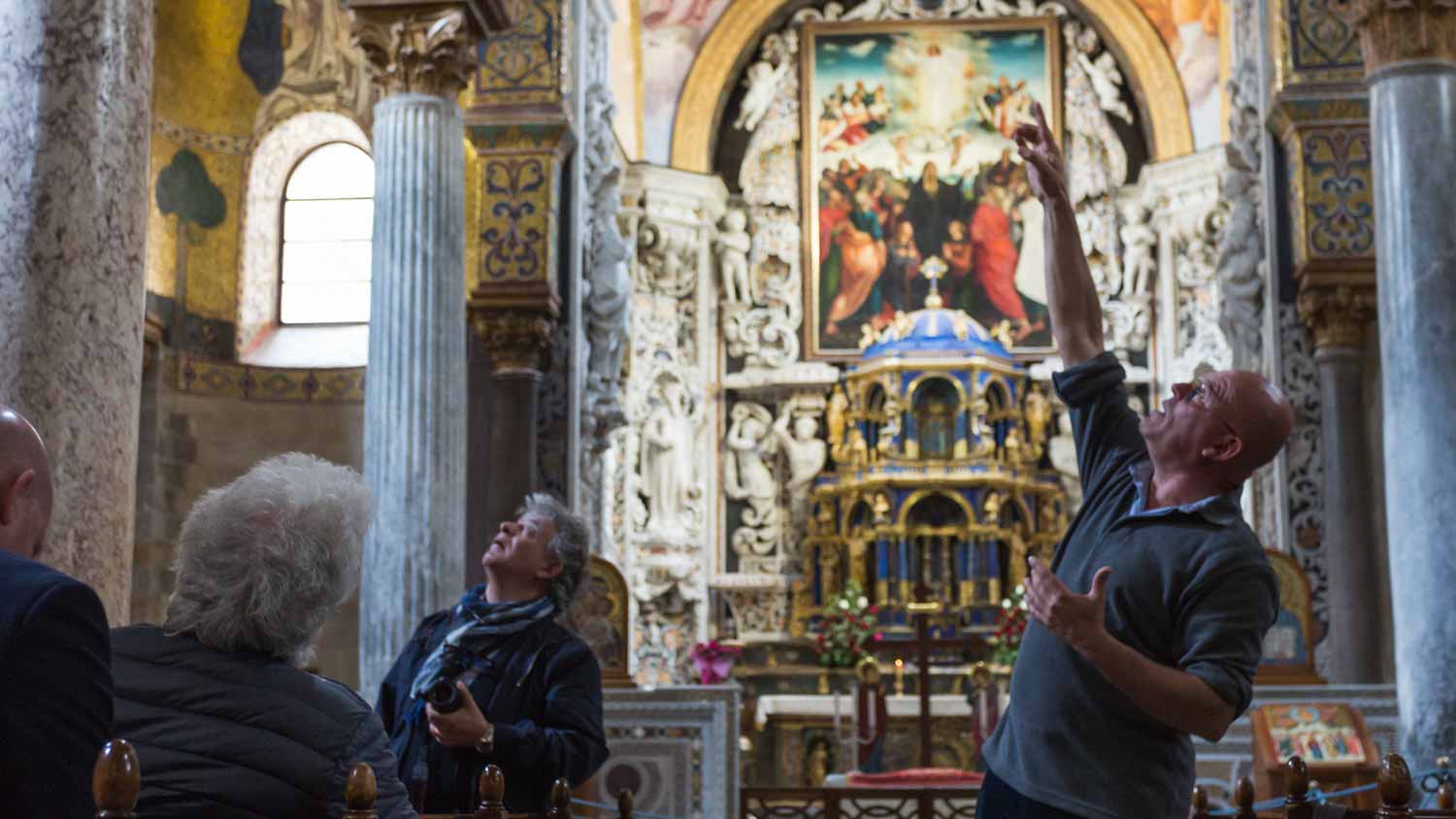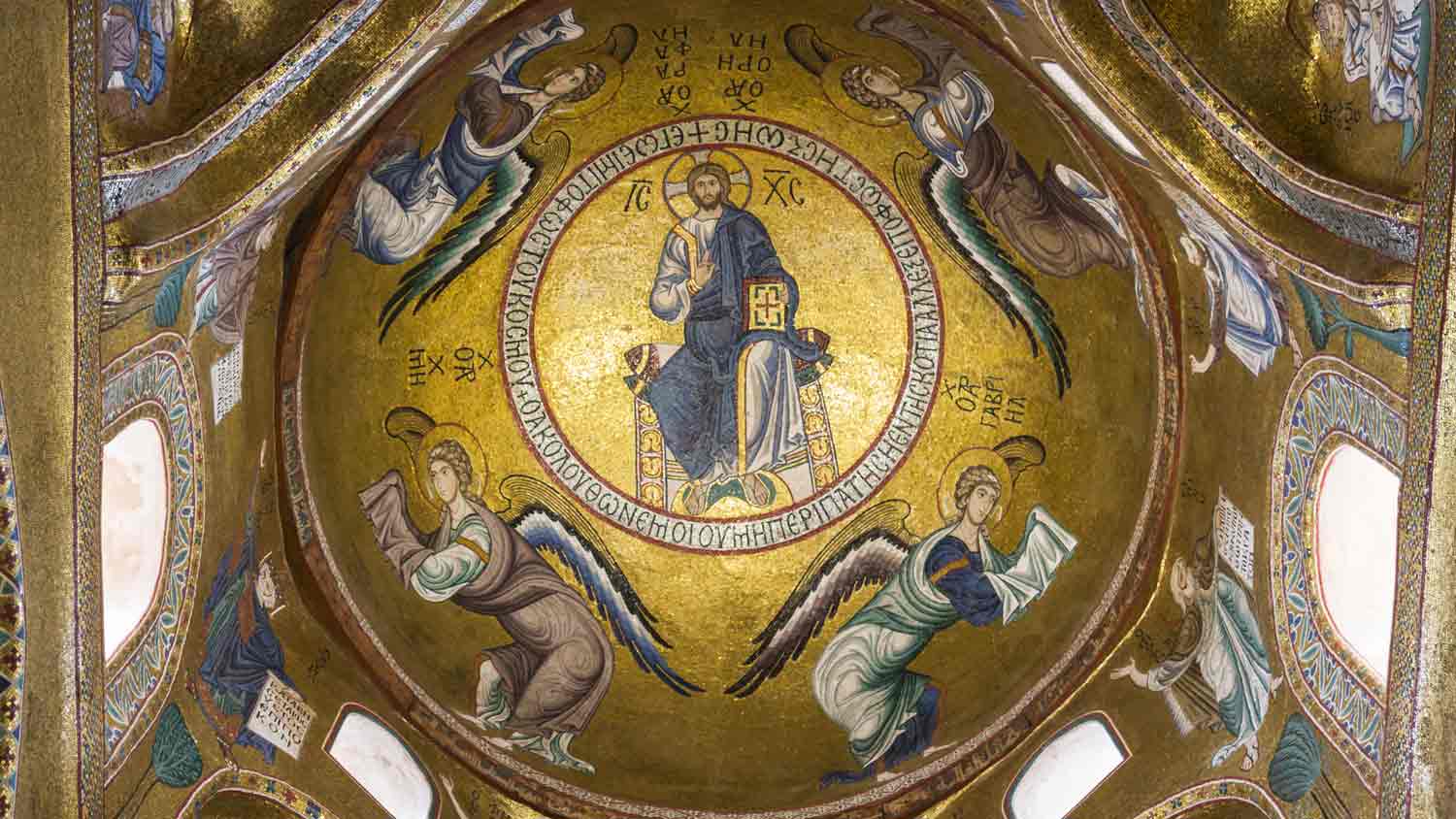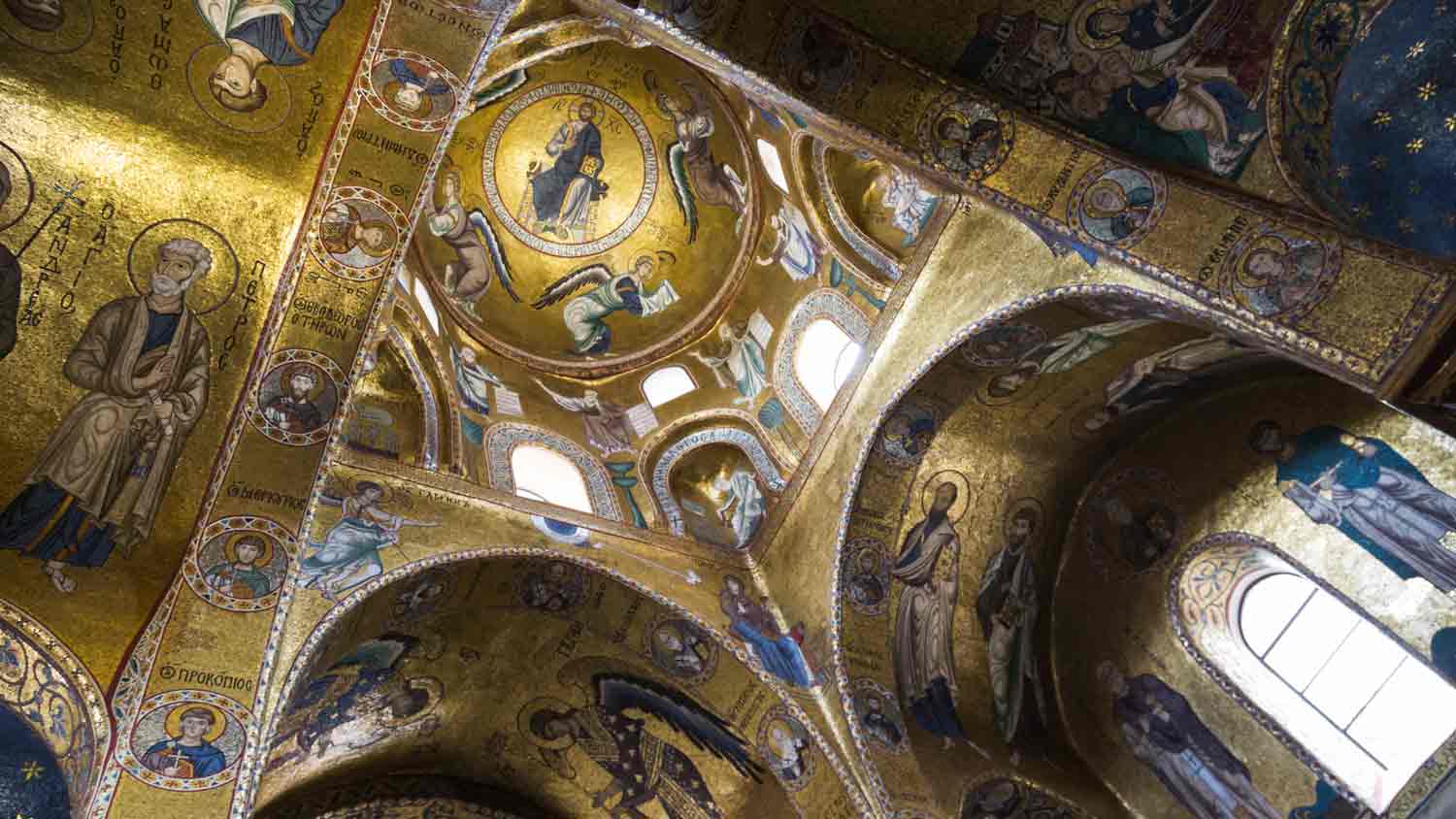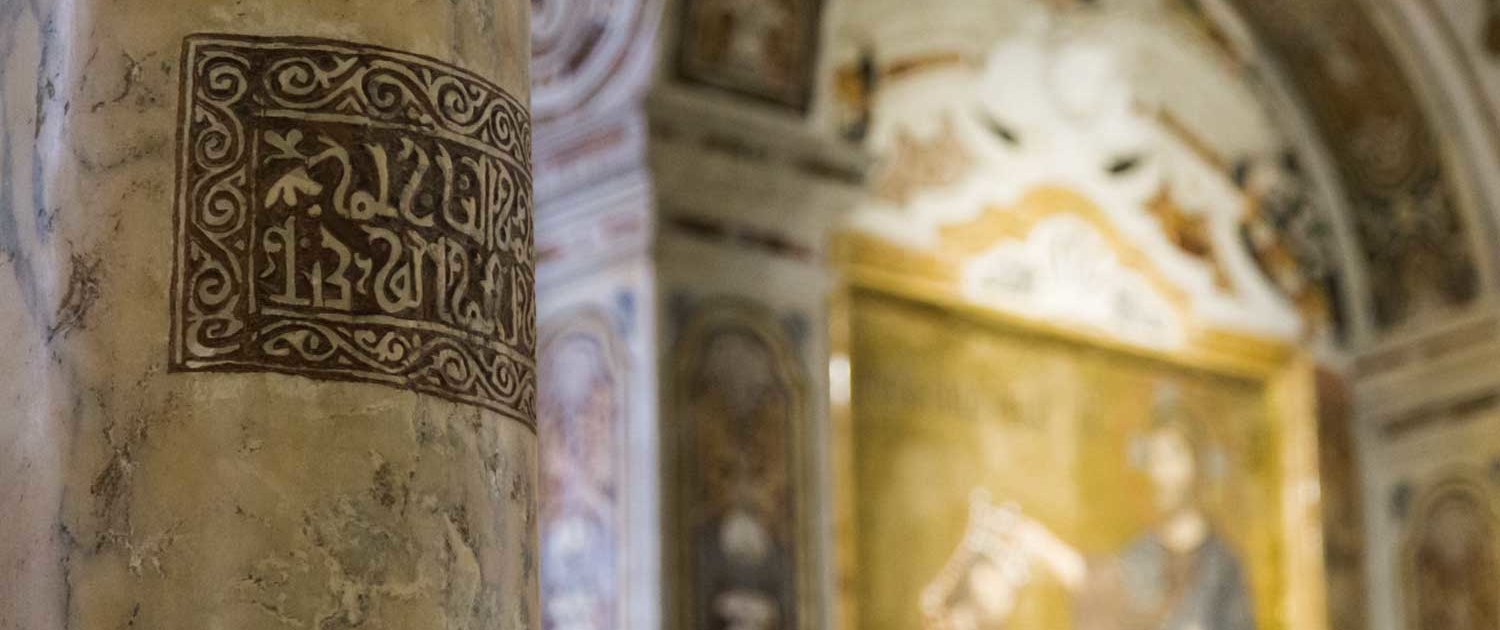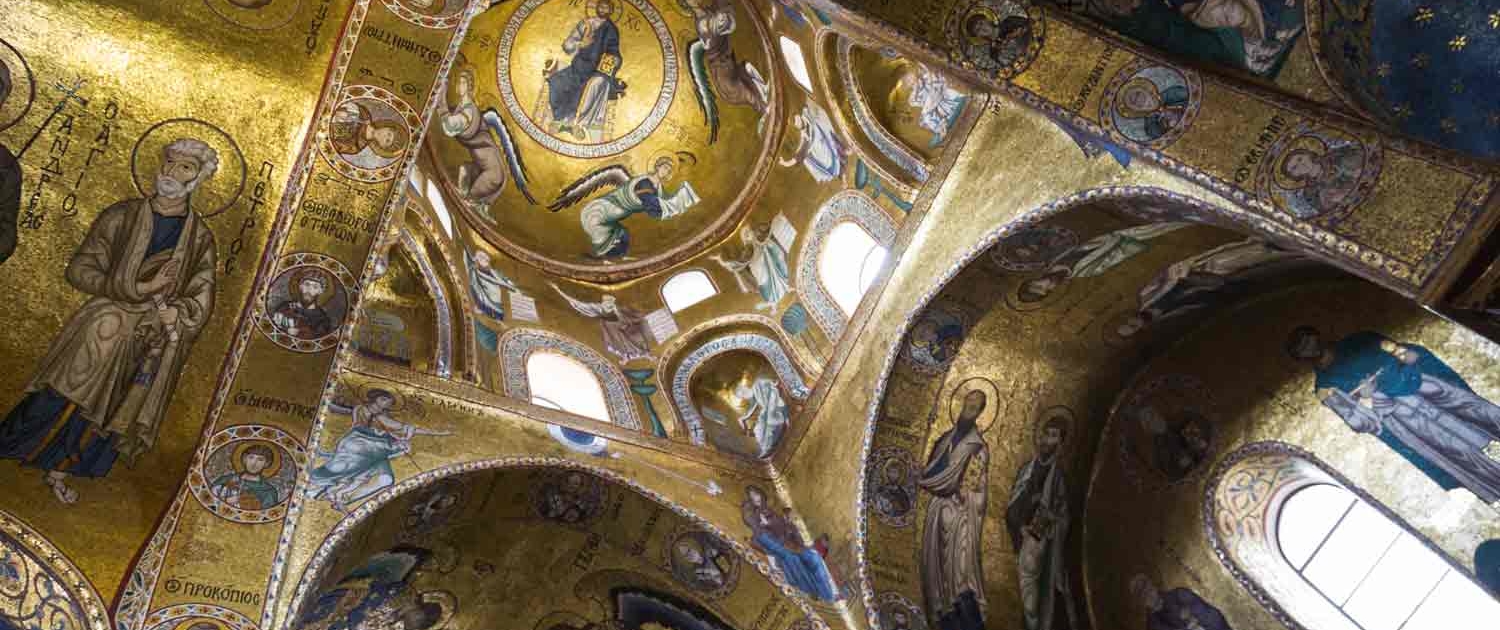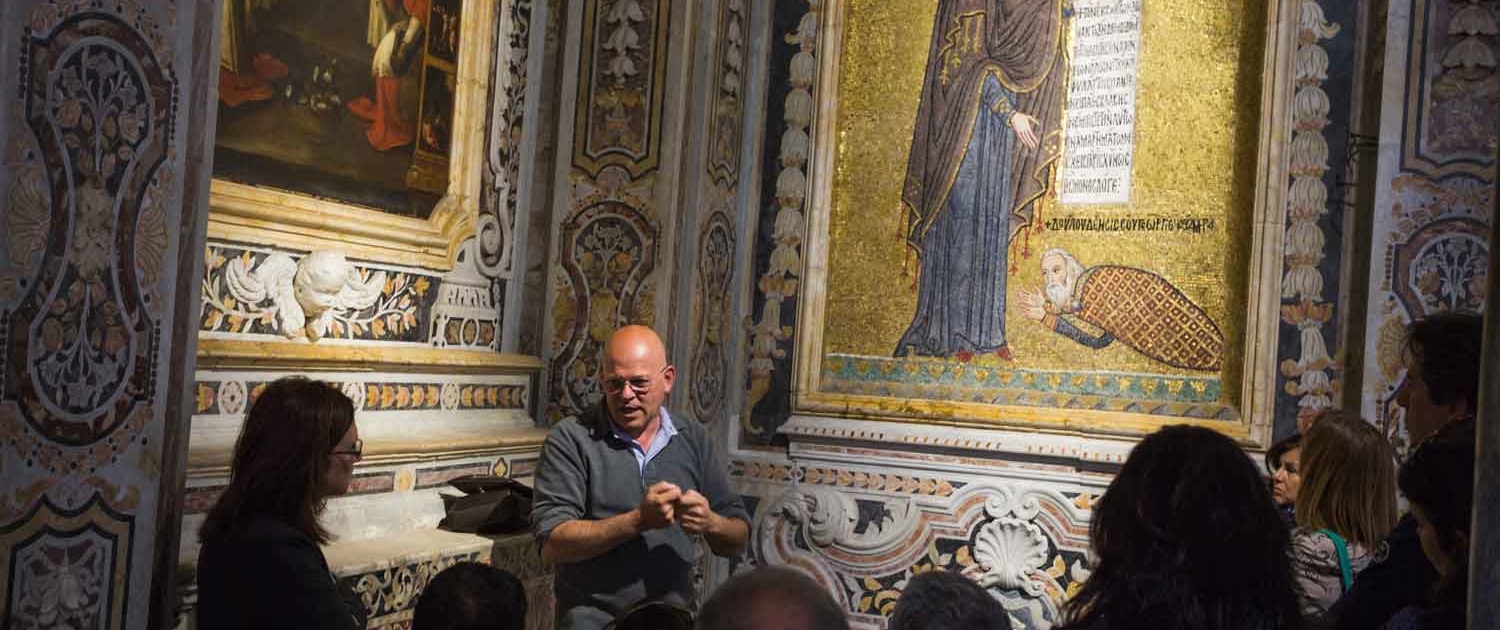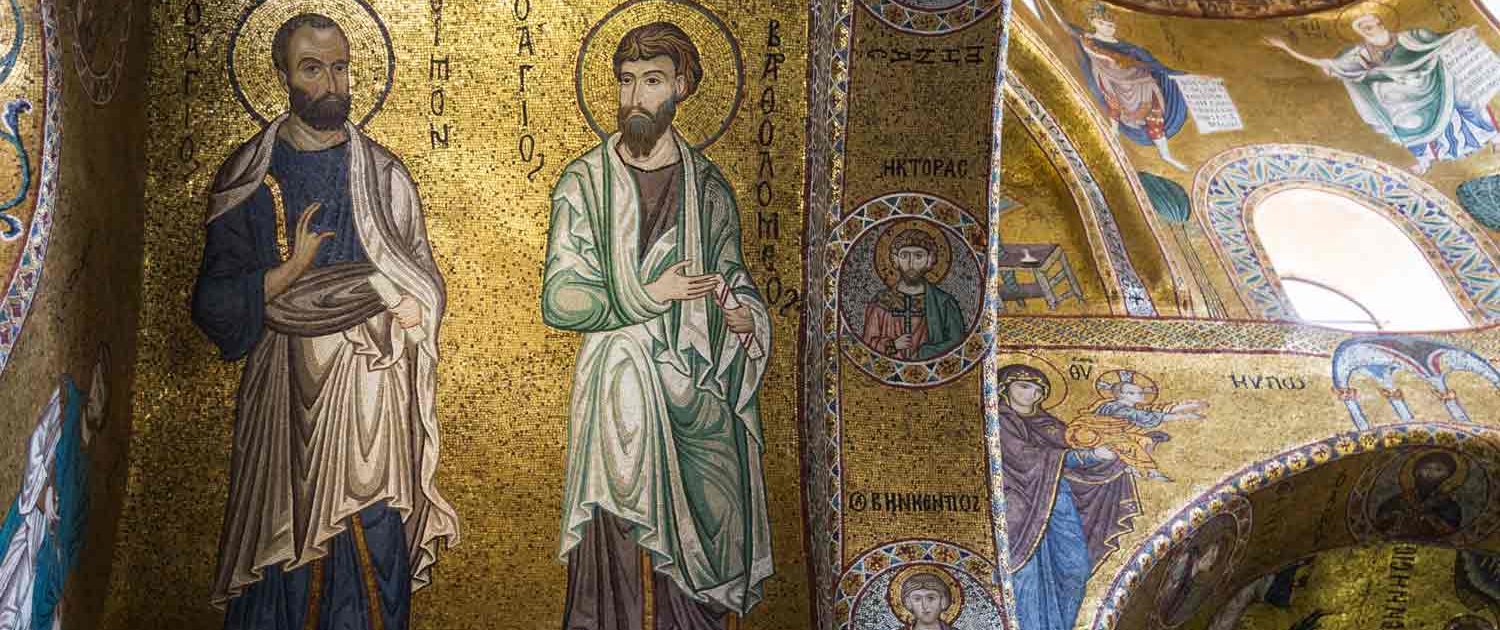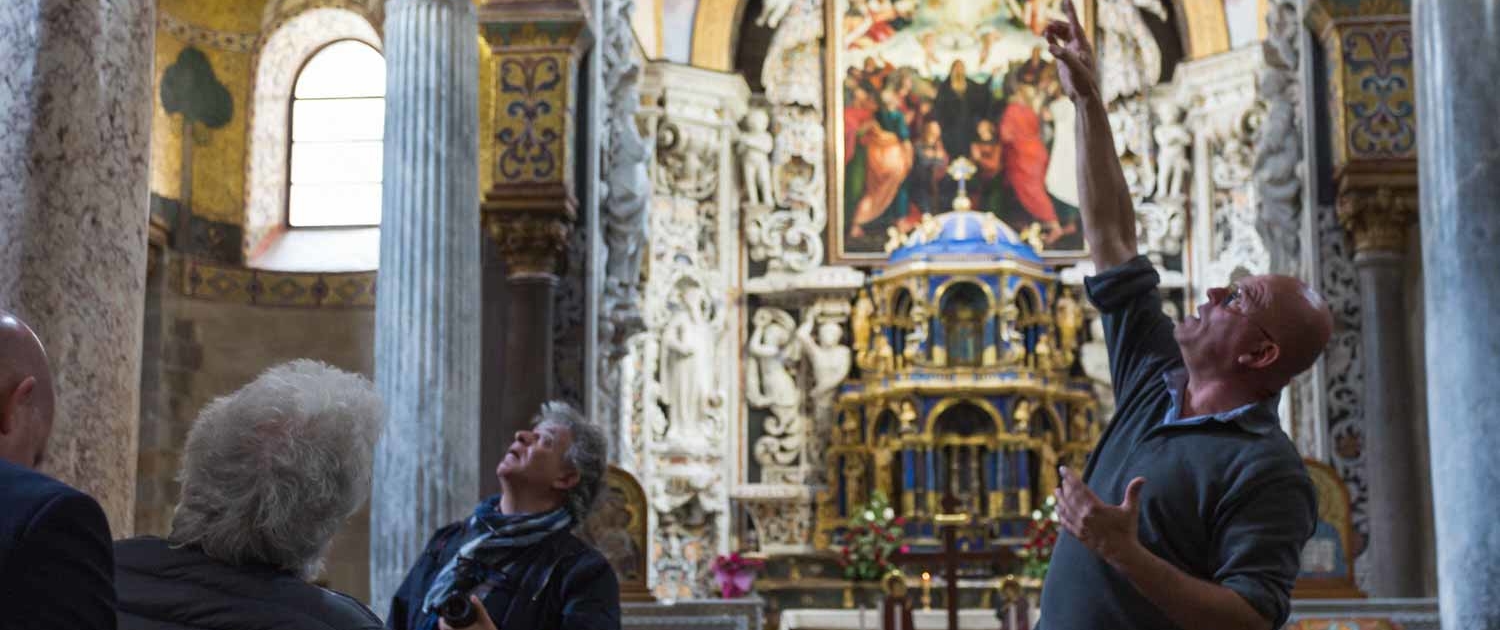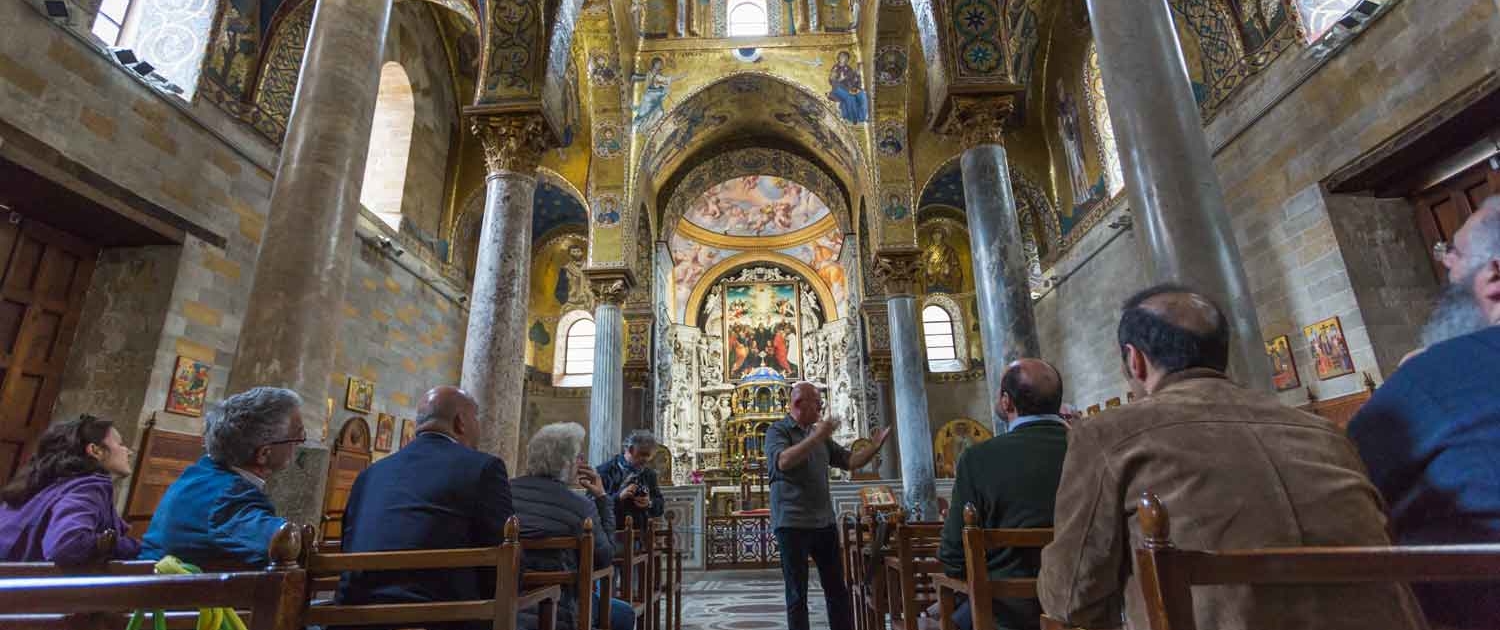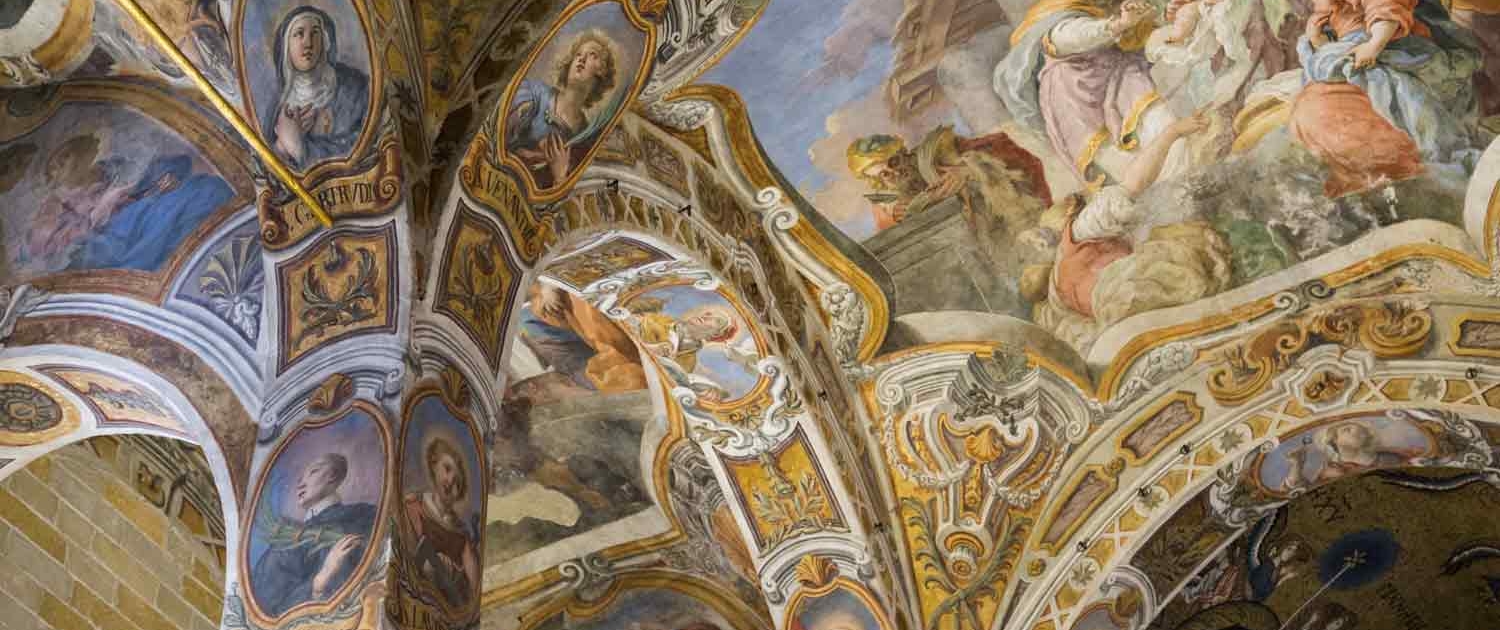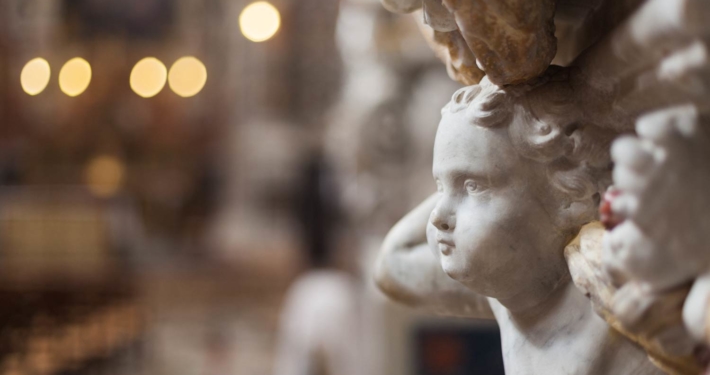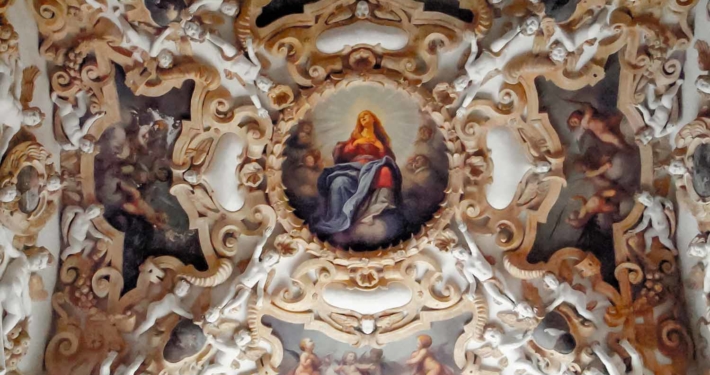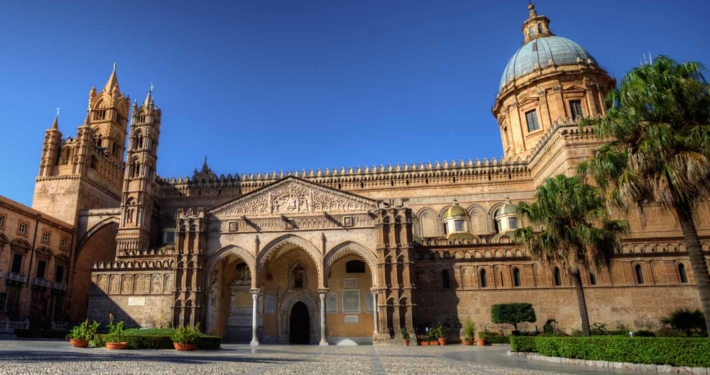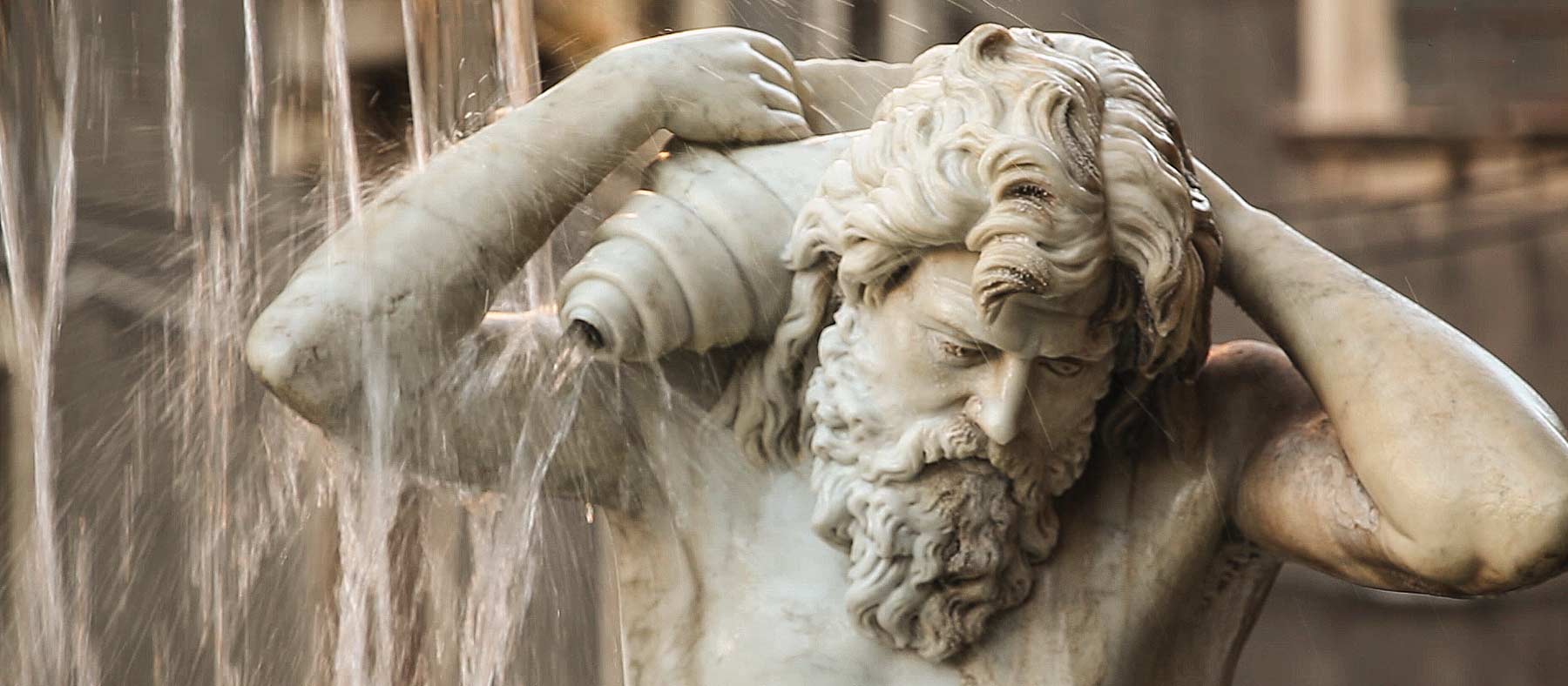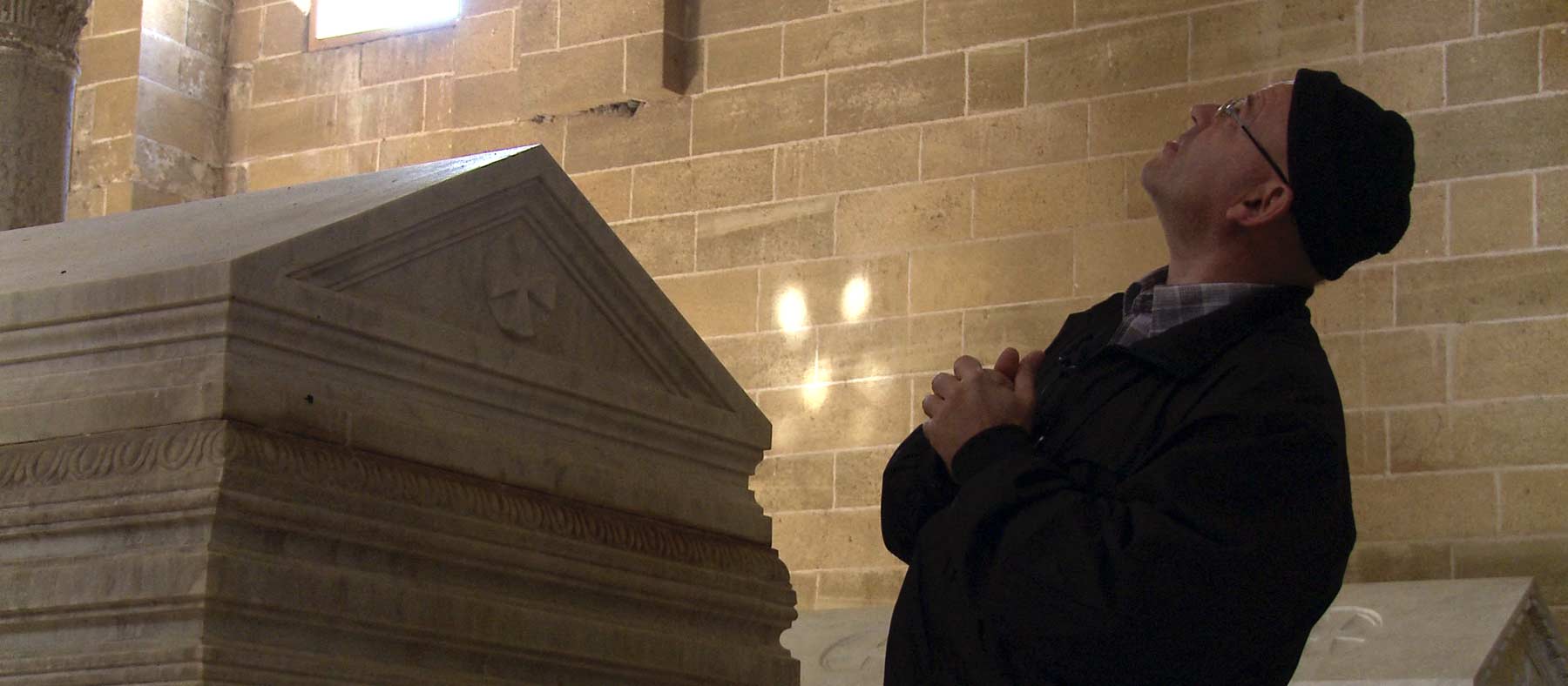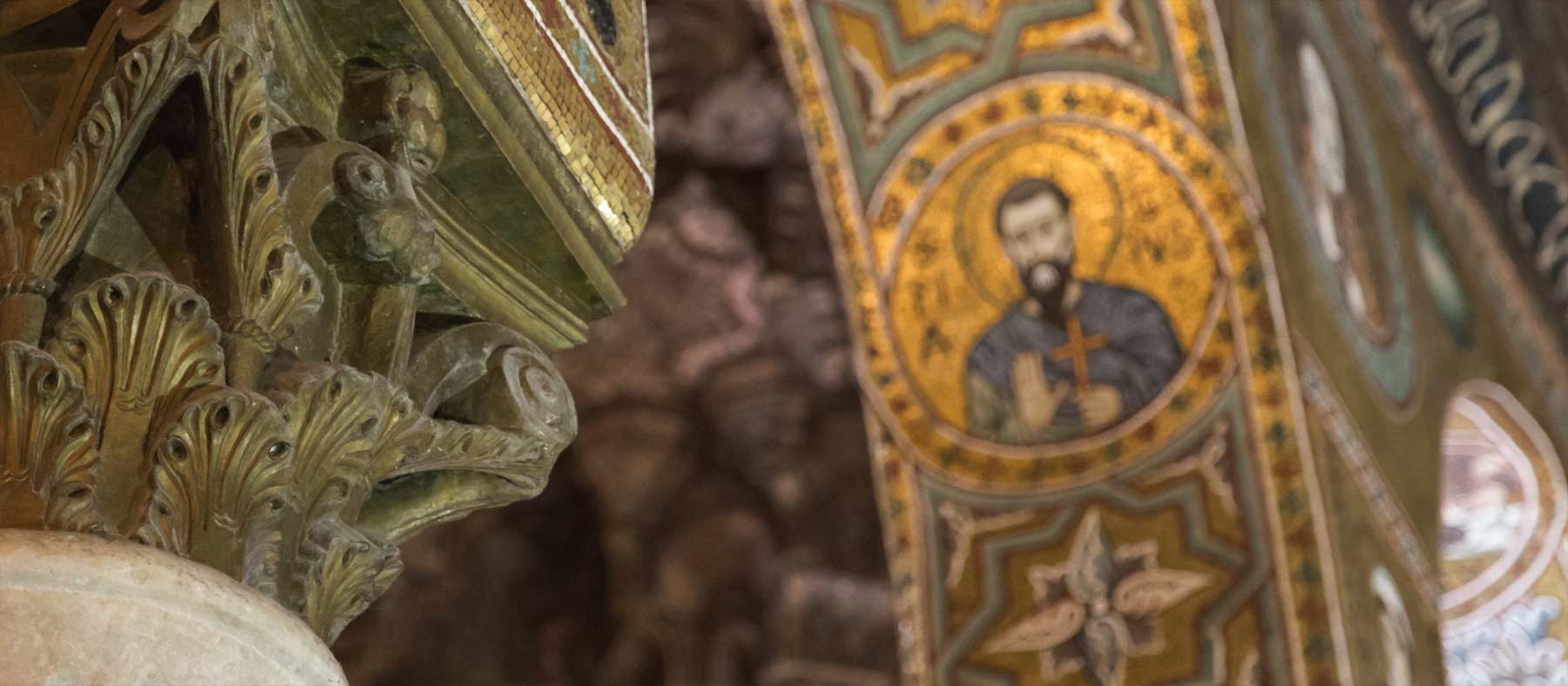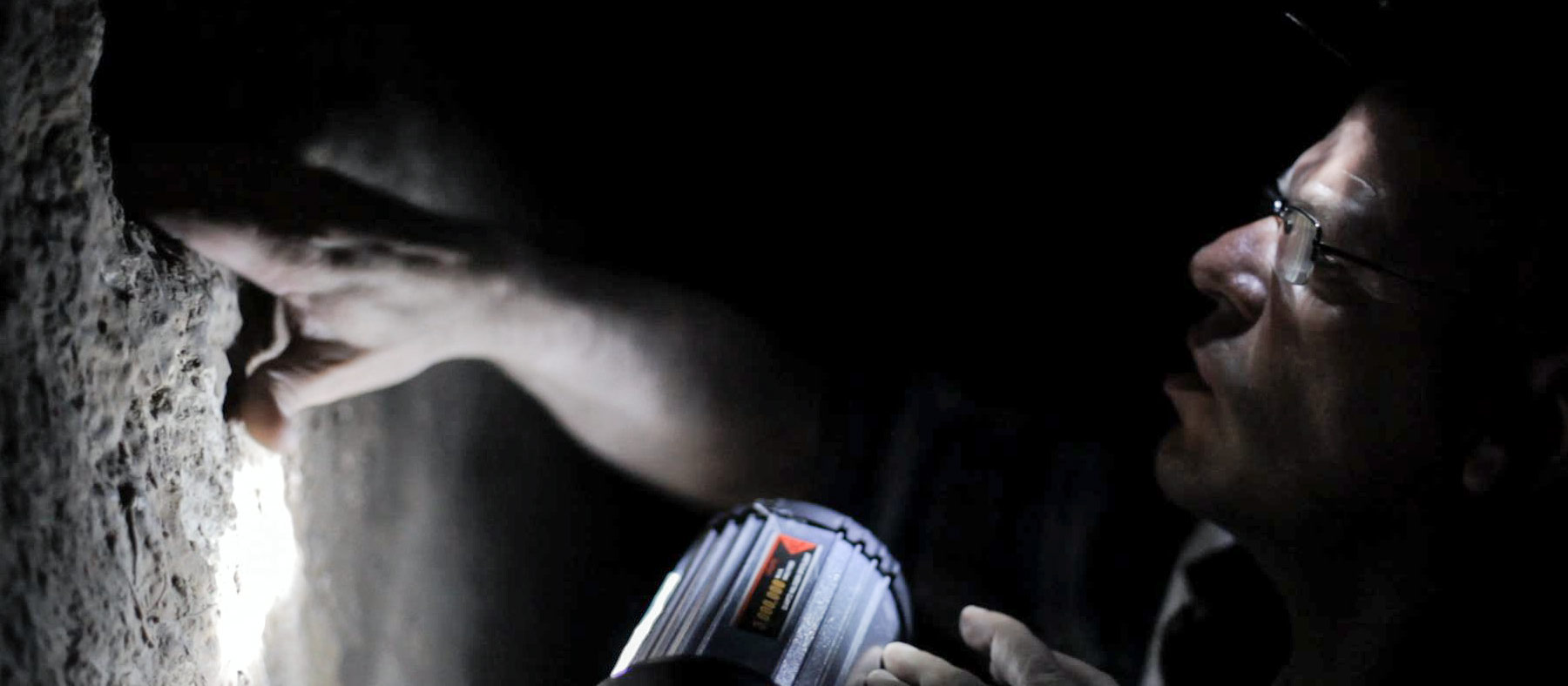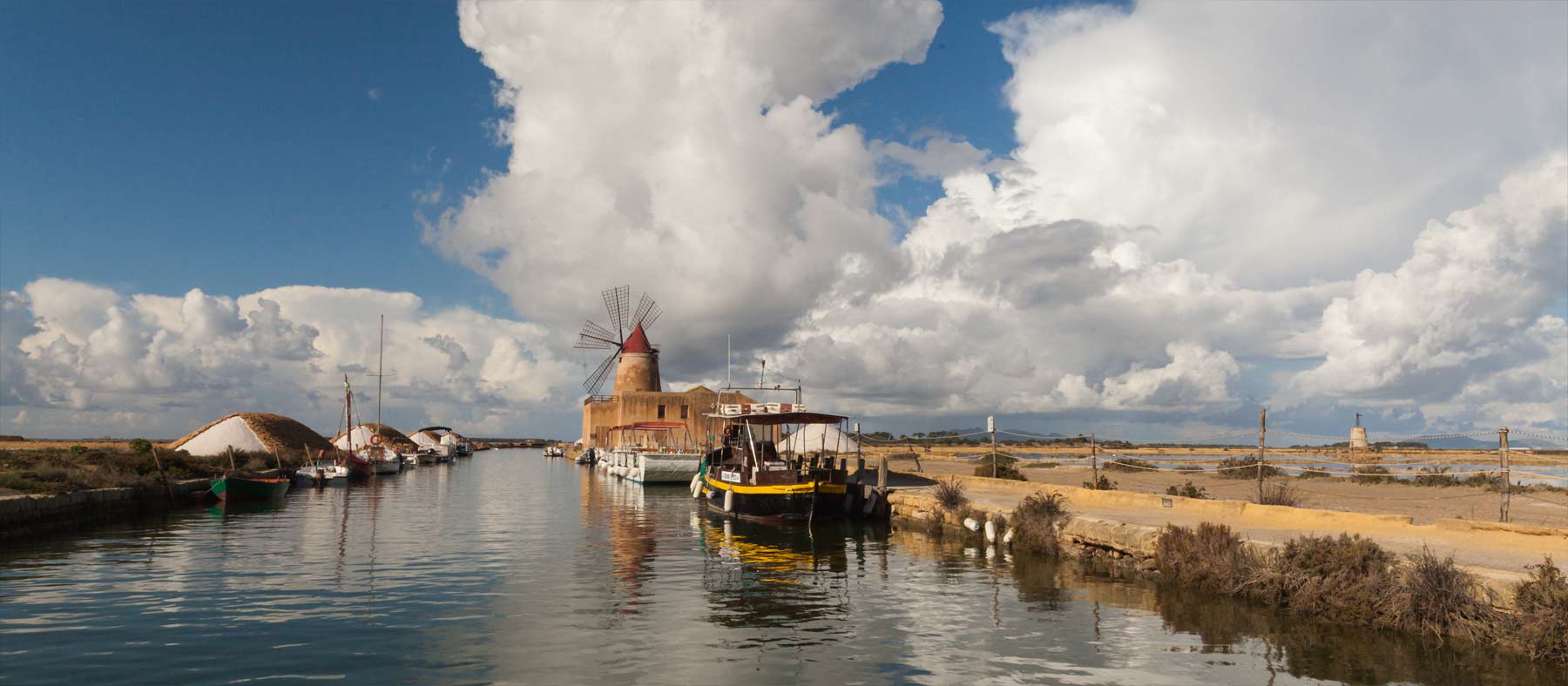3/4h | from 9 to 13 or from 14 to 18
Church of Martorana
Santa Maria dell’Ammiraglio
It was customary for the Normans to adopt some administrative bases of Byzantine or Arab-Muslim tradition. Thus between the 11th and 12th centuries, the figure of the Amir el Bahr, that is "Admiral", was four times in a row of Greek culture.
In the time of Roger II Altavilla, the admiral was called Georghios Antiochenes, Syriac, devoted to Mary and his king. Along the walls of the Norman Balarm, close to the military port, the admiral built a Basilian convent, of which he used a wing for himself, built around an enclosed garden in the centre of which stood an admirable church.
Only a few traces of the original structure remain, but enough to allow us to understand it:
A one-storey watchtower to control the entrance. Two extra elevations will be added in the next centuries.
The Byzantine church was gutted in the 17th century for the addition of Latin naves.
The presbytery is inside the former convent, used in the 20th century by the University as a seat for the Faculty of Architecture.
Our visit to the Church of Santa Maria dell'Ammiraglio (or Martorana) focuses on this jewel worldwide famous for its combination of 12th century Byzantine mosaics and Flemish paintings by Wilhelm Borremans (1670-1744).
The Martorana offers the rare privilege of two approaches to the liturgy, Greek and Latin, and we owe it to Borremans to have expressed himself in a late Renaissance taste with the greatest respect for medieval ornaments.
For more information, reservations, special requests and for any need write using the contact form below.
It was customary for the Normans to adopt some administrative bases of Byzantine or Arab-Muslim tradition. Thus between the 11th and 12th centuries, the figure of the Amir el Bahr, that is "Admiral", was four times in a row of Greek culture.
In the time of Roger II Altavilla, the admiral was called Georghios Antiochenes, Syriac, devoted to Mary and his king. Along the walls of the Norman Balarm, close to the military port, the admiral built a Basilian convent, of which he used a wing for himself, built around an enclosed garden in the centre of which stood an admirable church.
Only a few traces of the original structure remain, but enough to allow us to understand it:
A one-storey watchtower to control the entrance. Two extra elevations will be added in the next centuries.
The Byzantine church was gutted in the 17th century for the addition of Latin naves.
The presbytery is inside the former convent, used in the 20th century by the University as a seat for the Faculty of Architecture.
Our visit to the Church of Santa Maria dell'Ammiraglio (or Martorana) focuses on this jewel worldwide famous for its combination of 12th century Byzantine mosaics and Flemish paintings by Wilhelm Borremans (1670-1744).
The Martorana offers the rare privilege of two approaches to the liturgy, Greek and Latin, and we owe it to Borremans to have expressed himself in a late Renaissance taste with the greatest respect for medieval ornaments.
For more information, reservations, special requests and for any need write using the contact form below.


